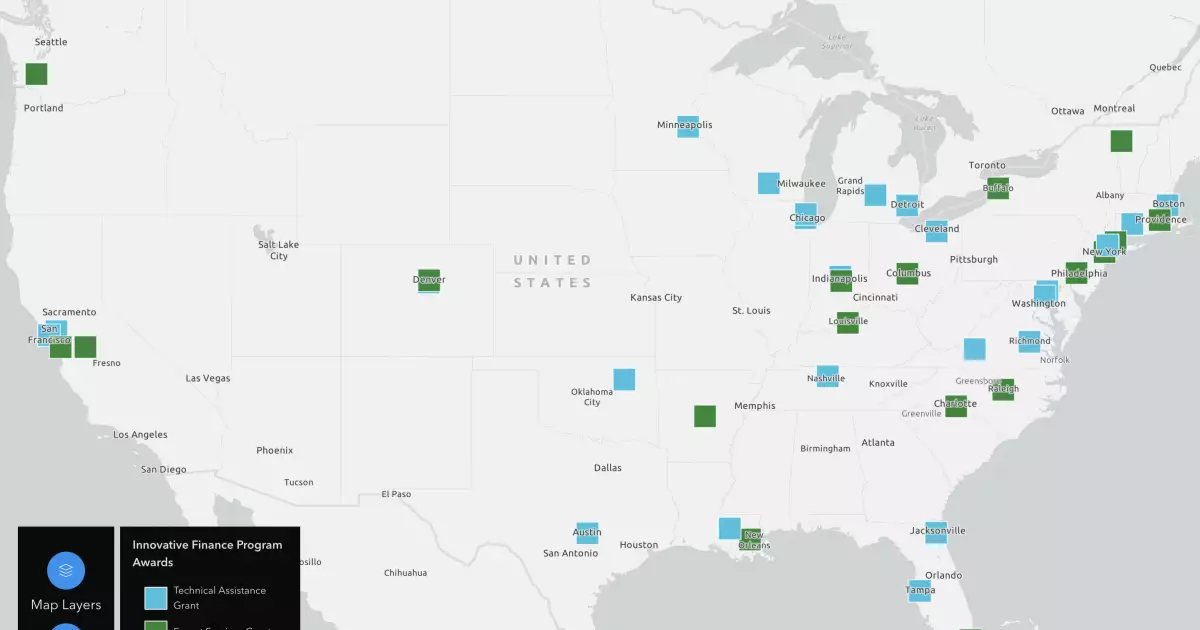In an era where public-private partnerships (P3s) are becoming increasingly vital to urban development, a newly launched initiative under the 2021 Infrastructure Investment and Jobs Act has secured attention for its strategic approach. The Innovative Finance and Asset Concession Grant program has been introduced to assist local, regional, and state governments in systematically cataloging their infrastructural assets with a focus on potential monetization. With nearly $50 million allocated to 45 deserving entities, the program sets a promising precedent for future collaborations between the public and private sectors.
The funding, overseen by the U.S. Department of Transportation’s Build America Bureau, aims to facilitate a thorough inventory of public assets. Morteza Farajian, executive director of the Bureau, emphasized the initiative’s potential to enhance visibility for developers keen on engaging with community projects. By sourcing detailed information about existing infrastructure, including transit systems and public spaces, this program could streamline future development efforts and encourage more comprehensive approaches to urban planning.
In particular, the program’s emphasis on Transportation Infrastructure Finance and Innovation Act (TIFIA) loan eligibility illustrates a thoughtful intersection of infrastructure financing and asset management. With more than 70% of project proposals focused on transit-oriented development (TOD) and downtown revitalization, it is evident that local governments are prioritizing initiatives that not only meet current demands but also anticipate future community needs.
Transportation Secretary Pete Buttigieg’s remarks encapsulate the essence of the program’s mission: fostering collaboration between the public sector and private entities. By empowering communities to engage the private sector for developing transit-oriented projects, the program aims to accelerate the completion of housing and other essential services. The allocation of relatively modest grants, averaging around $1 million, reflects a strategic investment that can yield significant returns through facilitated partnerships and leveraged expertise.
Moreover, the inclusivity of the grant program is noteworthy, providing both technical assistance and expert services. This dual approach allows municipalities to not only analyze potential asset concessions but also secure the professional resources needed to develop innovative solutions tailored to their unique circumstances. The case of Capital Metro in Austin serves as a pertinent example, where the funding will catalyze the creation of “equitable TOD pilot sites” aimed at sustainable urban growth.
As local and state governments respond to shifting economic landscapes and evolving societal needs, programs like the Innovative Finance and Asset Concession Grant initiative are proving essential. By enabling municipalities to efficiently catalog assets, explore monetization opportunities, and implement sustainable development strategies, this initiative signifies a vital step toward modernizing urban infrastructure.
Ultimately, the success of these partnerships hinges on the skillful navigation of relationships between public entities and private developers. With the ongoing commitment to transparency and a shared vision for urban renewal, communities across the nation have a unique opportunity to redefine the role of infrastructure as a catalyst for growth and prosperity. By embracing P3s, local governments can develop resilient frameworks that not only meet current infrastructural demands but also pave the way for future innovations.

